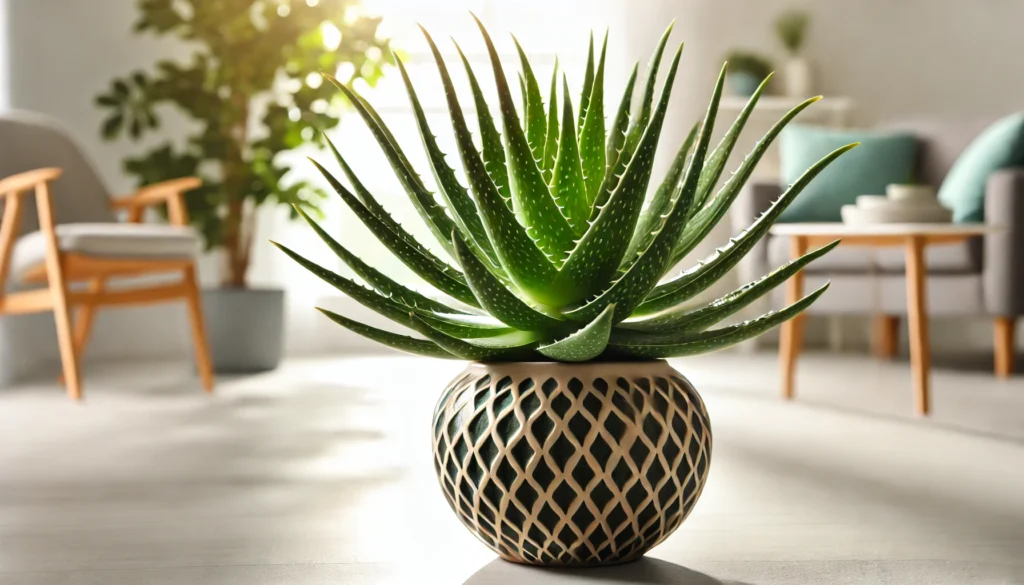
The Desert Rose, formally known as Adenium obesum, is a striking plant admired for its thick, swollen trunk and vibrant, trumpet-shaped flowers. Native to the arid regions of Africa and the Arabian Peninsula, this succulent can grow up to 3 feet tall when cultivated indoors, and even taller in its natural habitat. Its eye-catching flowers, which come in shades of pink, red, and white, make it a popular choice for both indoor and outdoor gardens.
A Glimpse into History and Ideal Growing Conditions
The Desert Rose has been cultivated for centuries, prized for its unique appearance and resilience in harsh environments. It thrives in warm, dry climates and is well-suited to growing in containers. To recreate its ideal growing conditions, place your Desert Rose in a sunny spot with at least 6 hours of direct sunlight each day. This plant prefers temperatures between 70-90°F and does not tolerate cold well. In cooler climates, it’s best to grow it indoors or move it inside during the winter.
Is the Desert Rose Safe for Pets?
While the Desert Rose is beautiful, it is also highly toxic to pets. The plant contains cardiac glycosides, which can cause serious health issues if ingested. Symptoms in pets may include vomiting, diarrhea, drooling, and even heart problems. Therefore, it’s crucial to keep this plant out of reach of curious animals.
Safe Alternatives for Pet-Friendly Gardens
If you’re looking for a pet-friendly alternative, consider plants like the Ponytail Palm (Beaucarnea recurvata), Haworthia (Haworthia spp.), or the Christmas Cactus (Schlumbergera spp.). These options are non-toxic to pets and still provide unique, attractive foliage.
Best Practices for Caring for the Desert Rose
The Desert Rose is relatively easy to care for, provided its basic needs are met. Here’s how to keep your plant healthy and vibrant.
Watering and Humidity
As a succulent, the Desert Rose prefers infrequent but deep watering. Allow the soil to dry out completely between waterings to prevent root rot. During the growing season (spring and summer), water the plant thoroughly, but reduce the frequency during the dormant period (fall and winter). The Desert Rose thrives in low humidity environments, making it well-suited to indoor conditions.
Soil, Light, and Temperature
Use a well-draining cactus or succulent mix for your Desert Rose, as this will help prevent waterlogged roots. Ensure the plant receives plenty of direct sunlight, as insufficient light can lead to weak, leggy growth. Desert Roses prefer warm temperatures and should be protected from cold drafts and frost. If you live in a cooler climate, consider growing it in a container that can be brought indoors during winter.
Common Problems and Remedies
The Desert Rose is a hardy plant, but it can encounter a few issues. Overwatering is the most common problem, leading to root rot. To avoid this, ensure the soil dries out between waterings and always use a well-draining mix. Pests like spider mites and mealybugs can occasionally infest the plant. If you notice pests, treat them with insecticidal soap or neem oil.
Propagation and Benefits
The Desert Rose can be propagated through seeds or cuttings. Growing from seed is a slow process, but it allows you to start with a strong, healthy plant. Cuttings are a quicker method, but they can be more challenging to root. This plant’s benefits extend beyond its beauty. It’s a perfect choice for those looking to add a touch of the exotic to their home or garden, and its drought tolerance makes it a low-water option for xeriscaping.
Final Thoughts
The Desert Rose is a stunning, resilient plant that can bring a unique touch to any indoor or outdoor garden. While it requires some care, particularly in terms of light and watering, it rewards its caretakers with beautiful blooms and a striking silhouette. Just be mindful of its toxicity to pets, and consider safe alternatives if you have animals in your home. With the right care, the Desert Rose will thrive and add beauty to your space for years to come.



